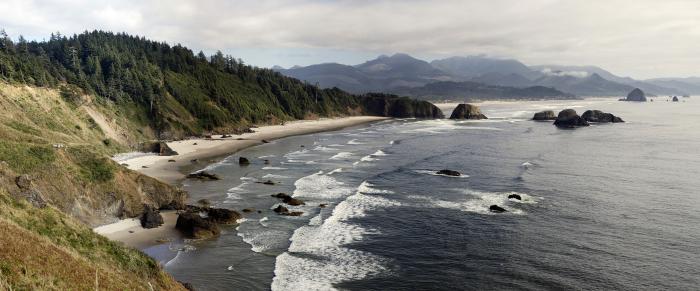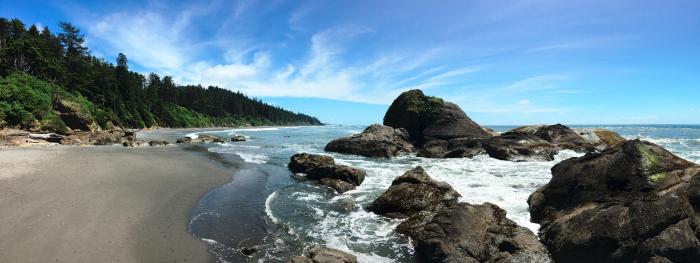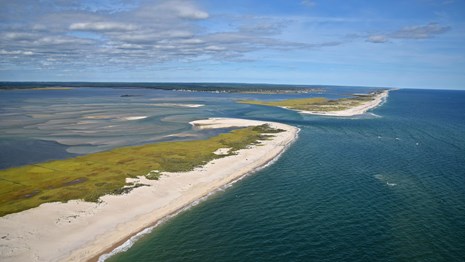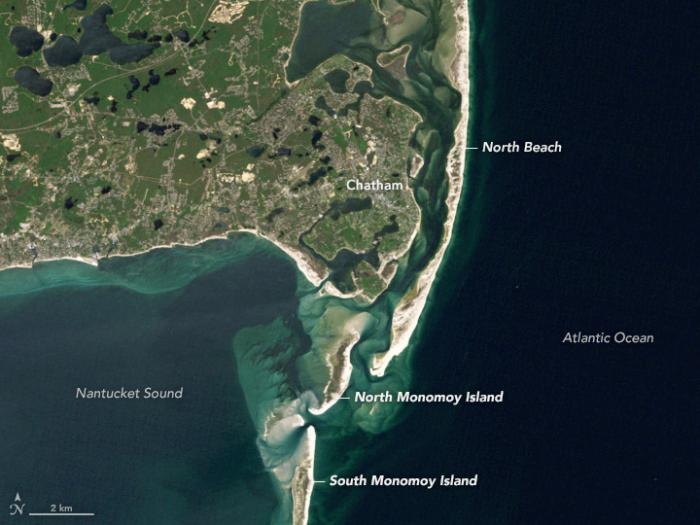Erosional and Depositional Coasts
Another approach to coastal classification is to consider whether coastal processes in the coastal zone are primarily contributing sediment to the coastline, or whether they are removing sediment from the coastline. The former of these is recognized as deposition, whereas the latter is known as erosion. Where erosion is the dominant process, the coastline is retreating landward, and where deposition is dominant, the coastline is advancing seaward.
Erosional Coasts
In places where there is an abundance of wave energy or ocean currents and/or a lack of sediment available for deposition, erosion of the coast will be the dominant mechanism of change. Quite often, erosional coasts are narrow and characterized by resilient rocky shorelines that are exposed to high energy waves and supply relatively little sediment to the adjacent shore. This is the case for much of the western U.S. where there are numerous rocky exposures and vertical sea cliffs (see images from Oregon and Washington coasts below). Often, but not necessarily always, erosional coasts are associated with coastal zones along active plate margins where there is a steady uplift of the landform, and few well-developed drainage basins and rivers systems have developed to deliver large quantities of sediment to the coast.


Depositional Coasts
Depositional coasts are characterized by abundant sediment supply that results in the net deposition of sediment and the creation of new coastal landforms despite the energy of the waves and ocean currents. There is a wide variety of landforms along depositional coasts, such as extensive beaches, barrier islands, and expansive coastal wetlands and mudflats (see typical depositional coasts in the images below). They are most common along mature, tectonically inactive continental margins where ample geologic time has passed for large drainage basins and rivers to develop, which can provide large quantities of sediment that can be distributed by waves and tides at the coastline.


